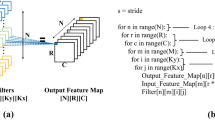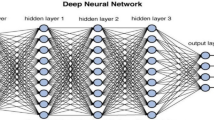Abstract
In recent years, neural networks based algorithms have been widely applied in computer vision applications. FPGA technology emerges as a promising choice for hardware acceleration owing to high-performance and flexibility; energy-efficiency compared to CPU and GPU; fast development round. FPGA recently has gradually become a viable alternative to the GPU/CPU platform.
This work conducts a study on the practical implementation of neural network accelerators based-on reconfigurable hardware (FPGA). This systematically analyzes utilization-accuracy-performance trade-offs in the hardware implementations of neural networks using FPGAs and discusses the feasibility of applying those designs in reality.
We have developed a highly generic architecture for implementing a single neural network layer, which eventually permits further construct arbitrary networks. As a case study, we implemented a neural network accelerator on FPGA for MNIST and CIFAR-10 dataset. The major results indicate that the hardware design outperforms by at least 1500 times when the parallel coefficient \( p \) is 1 and maybe faster up to 20,000 times when that is 16 compared to the implementation on the software while the accuracy degradations in all cases are negligible, i.e., about 0.1% lower. Regarding resource utilization, modern FPGA undoubtedly can accommodate those designs, e.g., 2-layer design with \( p \) equals 4 for MNIST and CIFAR occupied 26% and 32% of LUT on Kintex-7 XC7K325T respectively.
Access this chapter
Tax calculation will be finalised at checkout
Purchases are for personal use only
Similar content being viewed by others
References
Krizhevsky, A., Sutskever, I., Hinton, G.E.: ImageNet classification with deep convolutional neural networks. In: NIPS 25, pp. 1106–1114. Curran Associates, Inc. (2012)
Sun, Y., Wang, X., Tang, X.: Deep learning face representation by joint identification-verification. In: Neural Information Processing Systems, pp. 1988–1996 (2014)
Ji, S., Xu, W.: 3D convolutional neural networks for automatic human action recognition. Pattern Anal. Mach. Intell. 35(1), 221–231 (2013)
Abdel-Hamid, O.: Convolutional neural networks for speech recognition. In: Audio Speech & Language Processing (2014)
https://github.com/Xilinx/chaidnn. Accessed 31 Mar 2020
https://www.xilinx.com/support/documentation/whitepapers/wp504-accel-dNeuralnetworks.pdf. Accessed 31 Mar 2020
http://www.deephi.com/technology/dnndk. Accessed 31 Mar 2020
Abadi, M., et al.: Tensorflow: Large-scale ML on heterogeneous distributed systems. arXiv preprint arXiv:1603.04467 (2016)
Krizhevsky, A., Sutskever, I., Hinton, G.E.: ImageNet classification with deep convolutional neural networks. In: Neural Information Processing Systems, pp. 1097–1105 (2012)
He, K., Zhang, X., Ren, S., Sun, J.: Delving deep into rectifiers: surpassing human-level performance on ImageNet classification. In: Proceedings of the IEEE International Conference on Computer Vision, pp. 1026–1034 (2015a)
Russakovsky, O., et al.: Imagenet large scale visual recognition challenge. Int. J. Comput. Vis. 115(3), 211–252 (2015)
He, K., Zhang, X., Ren, S., Sun, J.: Deep residual learning for image recognition. In: Proceedings of the IEEE Conference on Computer Vision and Pattern Recognition, pp. 770–778 (2016)
Szegedy, C., et al.: Going deeper with convolutions. In: CVPR, pp. 1–9 (2015)
Guo, K., Zeng, S., Yu, J., Wang, Y., Yang, H.: A survey of FPGA-based neural network accelerator (2017). arXiv:1712.08934v3
Liang, S., Yin, S., Liu, L., Luk, W., Wei, S.: FP-BNN: binarized neural network on FPGA. Neurocomputing 275, 1072–1086 (2017). Accessed 18 Oct 2017. https://doi.org/10.1016/j.neucom.2017.09.046
NVIDIA, Tesla K40 GPU Active Accelerator, NVIDIA (2013)
Chen, Y.-H., et al.: Eyeriss: an energy-efficient reconfigurable accelerator for deep convolutional neural networks. IEEE Int. Solid-State Circ. Conf. (ISSCC) (2016)
Ovtcharov, K., Ruwase, O., Kim, J.-Y., Fowers, J., Strauss, K., Chung, E.S.: Accelerating deep CNNs using specialized hardware. In: Microsoft Research Whitepaper, vol. 2, no. 11 (2015)
Putnam, A., et al.: A reconfigurable fabric for accelerating large-scale datacenter services. In: International Symposium on Computer Architecture (ISCA), p. 1324 (2014)
Bettoni, M., Urgese, G., Kobayashi, Y., Macii, E., Acquaviva, A.: A convolutional neural network fully implemented on FPGA for embedded platforms. In: 2017 New Generation of CAS (NGCAS), Genova, pp. 49–52 (2017). https://doi.org/10.1109/ngcas.2017.16
Nurvitadhi, E., Sheffield, D., Sim, J., Mishra, A., Venkatesh, G., Marr, D.: Accelerating binarized neural networks: comparison of FPGA, CPU, GPU, and ASIC. In: 2016 International Conference on Field-Programmable Technology (FPT), Xi’an, pp. 77–84 (2016). https://doi.org/10.1109/fpt.2016.7929192
Nurvitadhi, E., Sim, J., Sheffield, D., Mishra, A., Krishnan, S., Marr, D.: Accelerating recurrent neural networks in analytics servers: comparison of FPGA, CPU, GPU, and ASIC. In: 2016 26th International Conference on Field Programmable Logic and Applications (FPL), Lausanne, pp. 1–4 (2016). https://doi.org/10.1109/fpl.2016.7577314
http://yann.lecun.com/exdb/mnist/. Accessed 31 Mar 2020
Krizhevsky, A.: CIFAR-10 AND CIFAR-100 DATASETS (2009). https://www.cs.toronto.edu/~kriz/cifar.html
https://becominghuman.ai/best-languages-for-machine-learning-in-2020-6034732dd24. Accessed 31 Mar 2020
https://opensource.com/article/18/5/top-8-open-source-ai-technologies-machine-learning. Accessed 31 Mar 2020
Feng, J., He, X., Teng, Q., Ren, C., Chen, H., Li, Y.: Reconstruction of porous media from extremely limited information using conditional generative adversarial networks. Phys. Rev. E. 100, 033308 (2019). https://doi.org/10.1103/physreve.100.033308
Hu, J., Shen, L., Sun, G.: Squeeze-and-excitation networks. 2018 IEEE/CVF Conference on Computer Vision and Pattern Recognition (2018)
Krizhevsky, A., Sutskever, I., Hinton, G.E.: ImageNet classification with deep convolutional neural networks. Commun. ACM (2017)
https://www.xilinx.com/support/documentation/sw_manuals/xilinx2018_1/ug937-vivado-design-suite-simulation-tutorial.pdf. Accessed 06 Jun 2020
Aurelien Gron.: Hands-On Machine Learning with Scikit-Learn and TensorFlow: Concepts, Tools, and Techniques to Build Intelligent Systems, 1st edn. O’Reilly Media (2017)
https://www.xilinx.com/support/documentation/selection-guides/7-series-product-selection-guide.pdf. Accessed 06 Jun 2020
https://www.xilinx.com/support/documentation/selection-guides/ultrascale-plus-fpga-product-selection-guide.pdf. Accessed 06 Jun 2020
https://www.xilinx.com/support/documentation/data_sheets/ds890-ultrascale-overview.pdf. Accessed 06 Jun 2020
Acknowledgment
This research is funded by the Vietnam National Foundation for Science and Technology Development (NAFOSTED) under grant number 102.01-2018.310.
Author information
Authors and Affiliations
Corresponding author
Editor information
Editors and Affiliations
Rights and permissions
Copyright information
© 2020 ICST Institute for Computer Sciences, Social Informatics and Telecommunications Engineering
About this paper
Cite this paper
Trinh, QK., Duong, QM., Dao, TN., Nguyen, VT., Nguyen, HP. (2020). Feasibility and Design Trade-Offs of Neural Network Accelerators Implemented on Reconfigurable Hardware. In: Vo, NS., Hoang, VP. (eds) Industrial Networks and Intelligent Systems. INISCOM 2020. Lecture Notes of the Institute for Computer Sciences, Social Informatics and Telecommunications Engineering, vol 334. Springer, Cham. https://doi.org/10.1007/978-3-030-63083-6_9
Download citation
DOI: https://doi.org/10.1007/978-3-030-63083-6_9
Published:
Publisher Name: Springer, Cham
Print ISBN: 978-3-030-63082-9
Online ISBN: 978-3-030-63083-6
eBook Packages: Computer ScienceComputer Science (R0)




